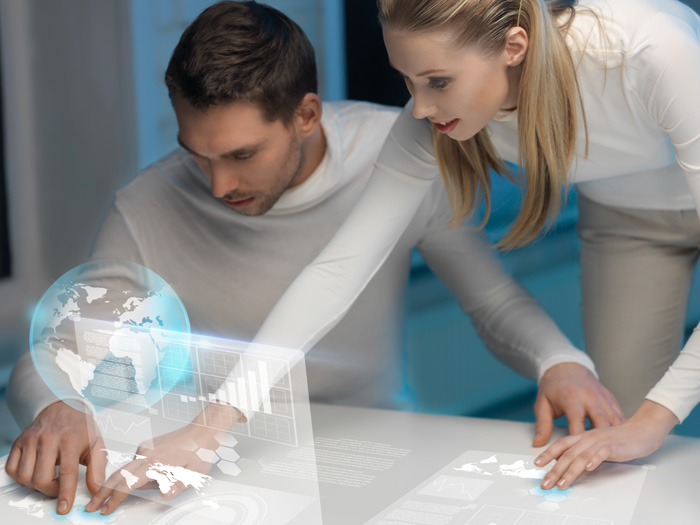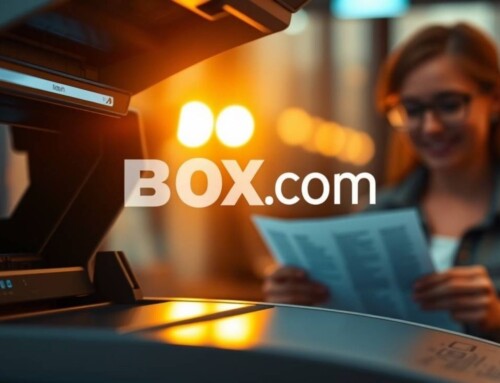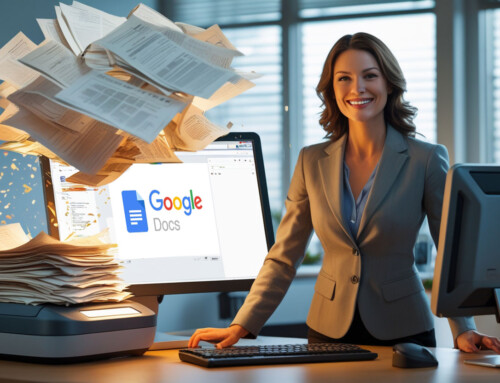
The office of 2016 is unrecognizable to someone who spent their career in the 1930s, 50s, 70s, or even up to and including the 90s. The definition of the word itself has changed. Where once we would picture private offices for the executives, isolated cubicles, strict work times, and a paper-based document workflow, the modern office is anything but detached. And paper? It’s going the way of the dodo.
The office of tomorrow – or even of today – is unlike anything we’ve encountered since the first office worker sat down in the first office. It’s evolving to keep pace with changing technology, changing design trends, and our shifting social and cultural beliefs.
Do we really need to work 9 to 5? Do we have to make that commute in every morning? Are we really more productive at the office? The answer for all is no. And the office of tomorrow is reflecting that.
The Migration to Mobile
We’re moving away from our desks, away from our desktop computer, and away from our filing cabinets and the normal process of document workflow. We’re moving into the mobile world – smartphones, tablets, and portable laptop computers. We buying real estate in the cloud. Our tech and personal preferences are leaning towards a “work anywhere at anytime” mentality. The cloud grants us the freedom to work from virtually anywhere.
Our offices, and the equipment we use to work, are encouraging mobility.
The Collaboration Game
The traditional office environment had a desk and a space for each individual worker. They had their own tasks, their own accounts to manage, and their own place to file that work away in a drawer or digital folder. But no more. We’re moving – running – away from individual contributions and towards a “whole team collaboration” model. My contributions are available to everyone, as are theirs to me. We use our individual strengths to our collective advantage.
Even the physical design of office spaces reflects this new attitude, with open-space concepts replacing closed cubicles and walls. The office is a place to work together. To collaborate. Many companies utilize transformable spaces with moveable walls, pods that can open and close depending on need, large tables and chairs instead of desks, and couches that encourage discussion and getting together with colleagues. Cubicles? No thanks.
A Remote Workforce
No longer the sole domain of the self-employed, remote working is on the rise. Global Workplace Analytics found that 20-25% of the American workforce does remote work at least some of the time. Working from home by non self-employed individuals has witnessed a 103% increase since 2005, and 3.7 million employees now work from their residence at least half the time.
What’s more, 80-90% of employees would like the option. It’s become a key negotiation topic that workers want, and employers are willing to discuss. At the recent Global Leadership Summit in London, 34% of business owners said more than half of their full-time staff would be working remotely by 2020. Half. In the next four years.
Environmental Awareness and Appreciation
Our reliance on paper is waning. Our belief that offices should be sterile and serious is dead and buried. The modern office sees no need or desire to waste money and resources (space, trees, time) on making paper copies, sharing paper copies, and keeping paper copies when the digital options are so numerous and superior. Physical office design frequently incorporates plenty of natural light, large windows, plants, and other living things. It makes us happier. It makes us more productive. And because of the more efficient use of space – and the smaller number of employees working in the office at any one time – businesses are able to function with smaller, more affordable, more environmentally sound locations.
Transparency, Immediacy, and the Big Picture
The collaborative pool that digital workflows and scanning to the cloud allows provides greater transparency and “big picture” thinking. It provides for instant Information for employees, customers, and partners. We can see, access, share, edit, comment, and collaborate with each other from wherever we are. It’s the difference between an Olympic-sized swimming pool for everyone rather than individual blow-up kiddie pools purchased from Walmart. We’re all in this together…even if we’re not all in the same place at the same time.
The office of tomorrow is mobile, collaborative, remote (at least part of the time), environmentally-friendly, transparent, and immediate. It’s embracing the best of what technology can provide: scanning and importing to the cloud with services like ccScan, collaboration both in the real world and digitally with innovative design practices and real-time tools, telework options, and mobile devices. We can literally carry our business in our pocket.
Try doing that with your oak desk and 4-drawer filing cabinet.





